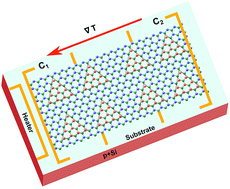Lateral transition-metal dichalcogenide heterostructures for high efficiency thermoelectric devices
Abstract
Monolayer transition-metal dichalcogenides (TMDC) have emerged as promising candidates for thermoelectric applications due to their large effective mass and low thermal conductivity. In this article, we study the thermoelectric performance of lateral TMDC heterostructures within a multiscale quantum transport framework. Both n-type and p-type lateral heterostructures are considered for all possible combinations of semiconducting TMDCs: MoS2, MoSe2, WS2, and WSe2. The band alignment between these materials is found to play a crucial role in enhancing the thermoelectric figure-of-merit (ZT) and power factor far beyond those of pristine TMDCs. In particular, we show that the room-temperature ZT value of n-type WS2 with WSe2 triangular inclusions is five times larger than that of the pristine WS2 monolayer. We also show that p-type MoSe2 with WSe2 inclusions has a room-temperature ZT value which is two times larger than that of the pristine MoSe2 monolayer. The peak power factor values, calculated here, are the highest reported amongst gapped monolayers at room temperature. Hence, monolayer lateral TMDC heterostructures open new avenues to develop ultra-efficient, planar thermoelectric devices.



 Please wait while we load your content...
Please wait while we load your content...